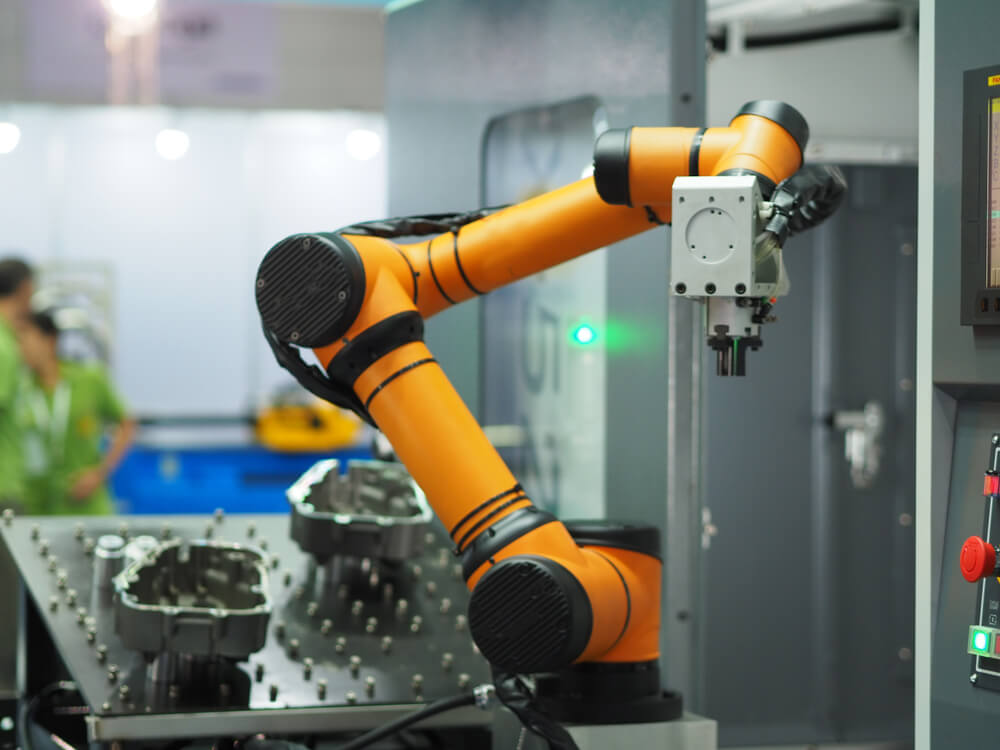Because material handling operations typically require small parts to be picked and positioned with precision, robotic grippers are ideal for this task. However, it is vital to select the right gripper. To do so, consider criteria such as how often the gripping movement will be repeated, the type of stroke needed, and the shape, size, and weight of the parts to be gripped.
Two Basic Grip Strokes
Grippers perform two basic types of grip strokes: parallel and angular. As their name suggests, parallel motion grippers clamp together in a linear compression motion. This is similar to the action of pressing sides of a vice. Because parallel motion grippers are more precise than angular ones, they are commonly used to handle intricate parts; however, they cost more than angular grippers.
Conversely, angular stroke grippers open simultaneously like a pair of scissors. In applications where accuracy is not a concern, and only one type of part is handled, angular grippers have the advantage of being less expensive.
Synchronous vs. Non-synchronous
Parallel grippers are divided into two categories: synchronous and non-synchronous. While synchronous parallel grippers come together at the same point and time, non-synchronous do not. Because of this, non-synchronous are fitting for applications with trickier handling, such as picking up pieces from a moving conveyor belt.
How Does a Gripper Grip?
There are three ways a gripper can grip parts: squeezing, cradling, or combining the two. With a friction grip, the fingers rely on the gripper’s force to hold the part. A cradle grip carries the parts between the fingers without squeezing them. However, the most secure method for holding parts is a combination of the two. It is important to note that the dimensions of the parts do play a role in choosing the proper grip.
Finger Design
After selecting the type of grip for the operation, the finger design is determined. V-shaped, rounded point fingers are ideal for high-speed operations. They can be fitted onto both grip types, creating a four-point contact to hold parts tightly. Three-jaw grippers are best for rounded parts. When selecting the finger design, it is helpful to consider finger length and weight. With both dimensions, less is better.
Heavier fingers slow down the gripper’s movement while longer fingers weaken the pressure of the grip. Aluminum, a relatively lightweight, inexpensive material, will not sacrifice strength. Additionally, shops can modify the gripper fingers if they prefer narrower. Doing so lightens the gripper and prevents interference that can sometimes occur when fingers open and close.
Material and Surface Finish
Additionally, the grippers’ actual material and surface finish should be considered. Some material handling operations involve oil or other liquids, which means the grippers can become greasy. If greasy,
grippers may have difficulty doing their job. For these applications, modified grippers with a knurled or beveled surface are useful, as is coating the gripper in urethane material to increase traction on the surface area of the fingers. The alignment of the fingers on the robotic gripper is another critical factor in how well it will perform. When the fingers do not meet accurately, the gripper’s holding power, and the part itself, will be compromised.
Why choose PFA for your robotic material handlers?
If your robot tooling needs to be able to pick up, manipulate, and place products, you will need a robotic gripper. With so many types, sizes, and configurations on the market, it can be daunting when selecting the optimum gripper for your robot tool. PFA’s team works to determine the best robotic gripper for your application, design, and most importantly, your part or product.
Let us help you get a grip on your automation system by contacting us today or calling 262-250-4410 .


